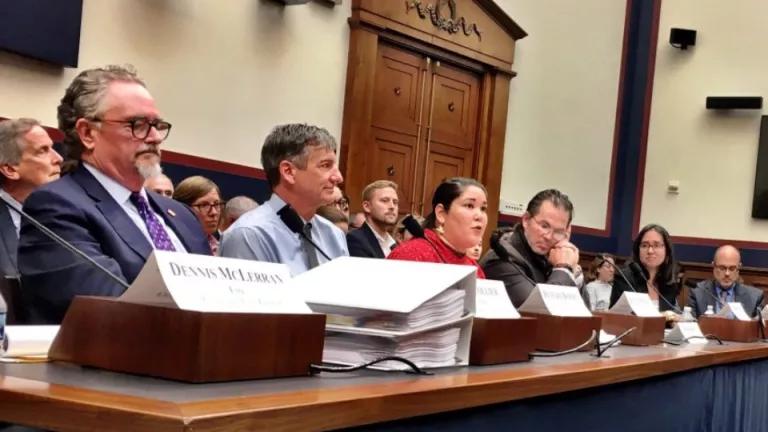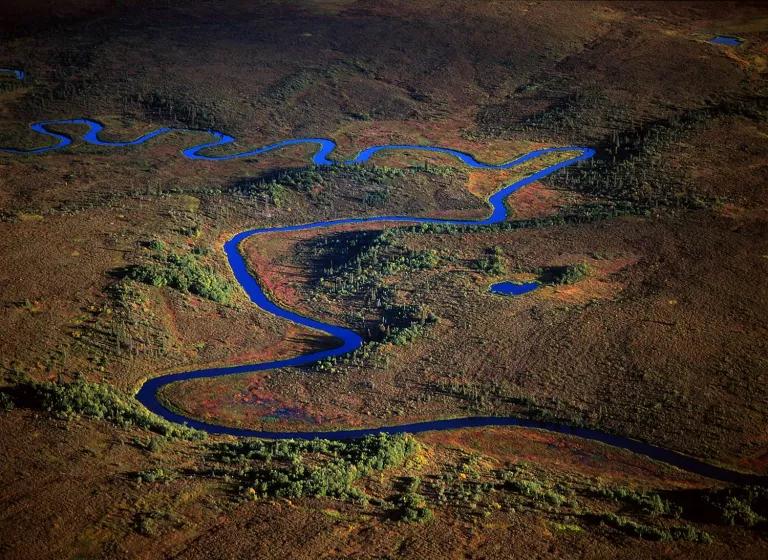Pebble Mine, Tom Collier, and 12.5 Million Pieces of Silver
Showing it “doesn’t give a rat’s ass what happens in Alaska,” the Army Corps of Engineers is expected this month to issue its fatally flawed EIS for the reckless Pebble Mine in Bristol Bay, ignoring overwhelming opposition in Alaska but sticking to the schedule needed by Pebble CEO Tom Collier to collect a $12.5 million personal bonus.

Pebble CEO Collier (left) at congressional hearing (October 2019)
In March 2019, in a rare moment of candor, Pebble Mine CEO Tom Collier expressed his perception that “[n]o one gives a rats ass what happens in Alaska.” He’s been wrong about so many things over the years, but the Army Corps is primed later this month to prove him dead right in that particular assessment—at least as far as the Pebble Partnership and the Army Corps are concerned.
And Collier appears also to have been right about something else:
With Donald J. Trump in the White House for perhaps just one term, Collier has a provision in his own employment contract that entitles him to a $12.5 million personal bonus if he could persuade the Army Corps to permit Pebble on an accelerated schedule.
- Never mind the widespread demand from Alaskans and other stakeholders for more time to review and comment on the environmental review for this massive mining scheme at the headwaters of the world’s most productive wild salmon fishery.
- Never mind the major data gaps and flaws in the Army Corps’ environmental review.
- And never mind even the massive disruption and risk of the global COVID-19 pandemic.
To anyone familiar with this most blatantly anti-conservation Administration, a decision by the Army Corps in late July on the FEIS will come predictably right on schedule for Collier and his bonus.
Pebble’s Collier hasn’t said what he plans to do with all that money, but it’s a safe bet that, if Pebble is built and, as scientists have predicted, eventually poisons the Bristol Bay ecosystem and its fisheries, Tom Collier will be hard to find. Alaskans will be left to deal with the toxic waste in the heart of a region that, for millennia, has sustained its communities, its wildlife, and the way of life of its people. The meager revenue sharing proposal recently floated by Pebble hoping to win friends in the region will be no consolation at all.
Not to worry, assures Collier, because Pebble is designing a containment that is “fail safe.” He is “absolutely convinced [the project] will not harm the fishery in Bristol Bay,” based on “sophisticated models [that] show we can have a potentially positive impact on fish habit” – a view echoed by Northern Dynasty Minerals CEO Ron Thiessen that Pebble “will enhance the fisheries.”
But the overwhelming consensus of commenters on the draft environmental review didn’t buy any of that, including federal agencies like the Department of the Interior, EPA, and National Marine Fisheries Service, Alaskan tribes, native corporations and village associations, commercial and recreational fishermen, hunters, conservationists, and businesses from around the country.
Equally important, Alaskans aren’t buying it either. In anticipation of the Army Corps’ rushed approval of the final environmental impact statement, Bristol Bay leaders last week (1) released new poll results showing a strong majority of Alaskans state-wide—62 percent—continue to oppose the Pebble Mine and (2) launched a new media and grassroots campaign against the widely condemned project, urging EPA to veto it. Among other things, the new poll results show that after hearing specific details about the project, opposition increases 8 points and support drops 7 points, proving once again that the more people know about the Pebble Mine, the less they like it.
The intensity gap is also glaring: Nearly half (48 percent) of respondents “strongly oppose” the mine compared to only 15 percent who “strongly support” it. In 2018, a poll commissioned by United Tribes of Bristol Bay revealed that an overwhelming majority (80 percent) of Bristol Bay residents think that the Pebble Mine would pose a serious threat to fishing in the region.
If the Army Corps completes the FEIS as expected later this month, the agency will be placing itself and its regulatory failures in the bulls-eye of certain legal challenge from a wide range of stakeholders inside and outside Alaska, including NRDC. The Army Corps has been clear throughout its accelerated permit review that it wasn’t listening or wasn’t paying attention to the details of environmental risk or the nuances of regulation. Its review has seemingly been dictated by a desire to wash its hands of this widely condemned project as quickly as possible.
This is no way to protect a national treasure.
Pebble CEO Tom Collier may be planning to enjoy his bonus, however he decides to spend it. But one thing is clear:
When the contamination starts, whether by incremental acid mine drainage or a catastrophic failure of containment, when the deadly gamble of permitting the Pebble Mine goes wrong, and when Collier’s facile assurances have morphed into a mirage, he can be expected to argue that the risk could not have been foreseen, that the harm is exaggerated, or that it was someone else’s fault.
Of particular personal importance to Collier will be that he successfully closed on his multi-million-dollar bonus. But Pebble’s overriding need for the Army Corps permit—in effect, the business plan of the company—is to attract cash and a new partner or major investor able to take over responsibility for funding, building, operating, expanding, and maintaining forever the Pebble Mine—aka “the wrong mine in absolutely wrong place.” We know this, because Northern Dynasty has said so—not just the “ten percent” mine plan for which a permit has been sought from the Army Corps, but for a century-long mine with ten times the volume and vastly greater—and yet unexamined—environmental risk.
We know that when Tom Collier speaks, it’s sensible to be skeptical. But today or in the future, whatever he says, let history record that he sold out the Tribes, communities, and people of Bristol Bay—some would say, he has sold out his own soul—for 12.5 million pieces of silver.
He isn’t the first to do so, and he won’t be the last. But when one day things go badly wrong at the Pebble Mine, as science and probabilities predict, Collier will justifiably be remembered as the architect of Bristol Bay’s demise.

Bristol Bay Region




